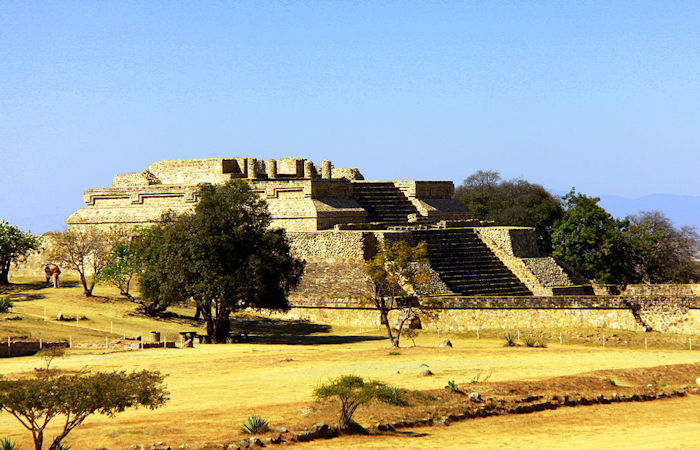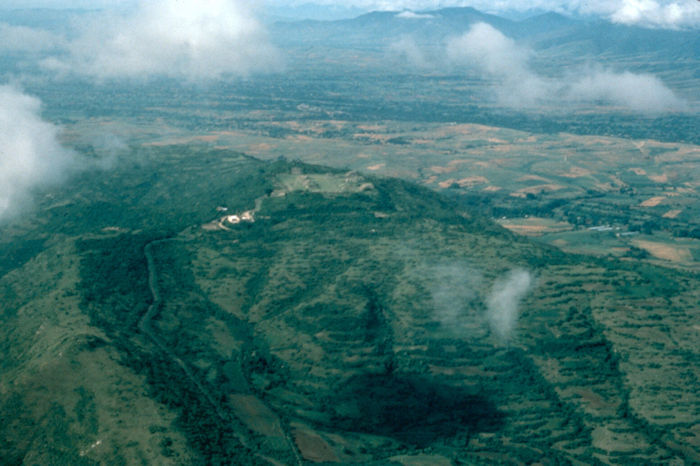Conny Waters – AncientPages.com – Some cities only last a century or two, while others last for a thousand years or more. Often, there aren’t clear records left behind to explain why. Instead, archaeologists piece together clues from the cities’ remains to search for patterns that help account for why certain places retained their importance longer than others.
In a new study published in the journal Frontiers in Ecology and Evolution, researchers examined 24 ancient cities in what’s now Mexico and found that the cities that lasted the longest showed indications of collective forms of governance, infrastructural investments, and cooperation between households.

The west side platform at the Monte Alban pyramid complex. Credit: Nsaum75 – CC BY-SA 3.0
“For years, my colleagues and I have investigated why and how certain cities maintain their importance or collapse,” says Gary Feinman, the study’s lead author and MacArthur Curator of Anthropology at the Field Museum in Chicago.
In previous studies, Feinman and his colleagues cast a wide net in terms of the cities they looked at, ranging across Mesoamerica over thousands of years. They found a broad pattern of societies with good governance that fostered the well-being of their people lasting longer than ones with autocratic leaders and big disparities in wealth. This new study тιԍнтens the focus on cities from similar places and times: all 24 of the cities analyzed were in the western half of Mesoamerica and were founded between 1000 and 300 BCE.
To a non-archaeologist, looking at ancient ruins and trying to extrapolate what its government was like might seem like an impossible task. But remnants of the cities’ buildings, ground plans, plazas, and monuments contain clues.
“We looked at public architecture, we looked at the nature of the economy and what sustained the cities. We looked at the signs of rulership, whether they seem to be heavily personalized or not,” said Feinman. Art and architecture celebrating larger-than-life rulers point to more autocratic or despotic societies, whereas the depiction of leaders in groups, often masked, is more indicative of shared power arrangements.
Feinman and his co-authors, David Carballo of Boston University, Linda Nicholas of the Field Museum, and Stephen Kowalewski of the University of Georgia, found that among the 24 ancient cities they analyzed, the ones with more collective forms of governance tended to remain in power longer than the autocratically ruled cities, sometimes by a thousand years. However, even among places that likely had good governance, some cities outlasted others.
To get at why these similarly governed cities fared differently, the researchers examined other aspects of their makeup including infrastructure and indications of household interdependence. “We looked for evidence of path dependence, which basically means the actions or investments that people make that later end up constraining or fostering how they respond to subsequent hazards or challenges,” says Feinman.
Early efforts to construct dense, interconnected residential spaces and the construction of large, central, open plazas were two of the factors that the authors found contributed to greater sustainability and importance of the early cities.
To examine sustainability in the past, most research looks for correlations between specific climatic or environmental events and the human responses. This approach may make sense, but it is hard to know whether the timing is reliable. Such studies often emphasize a correlation between environmental crisis and collapse without also considering how other cities successfully navigated the challenges and continued as major population centers.

Aerial image of Monte Alban. Credit: Linda M. Nicholas
The authors use a different tack. Knowing residents faced hazards, including drought, earthquakes, periodic hurricanes/heavy rains, challenges from competing centers and groups, they examined the durational history of the 24 centers and what factors fostered their sustainability. The finding that governance had an important role in sustainability shows that “responses to crises and disasters are to a degree political,” says Linda Nicholas, an adjunct curator at the Field Museum and co-author of the study.
The cities that lasted the longest had a combination of infrastructural investments and collective governance. It’s a lesson still relevant today. “You cannot evaluate responses to catastrophes like earthquakes, or threats like climatic change, without considering governance,” says Feinman. “The past is an incredible resource to understand how to address contemporary issues.”
The study was published in the journal Frontiers in Ecology and Evolution
Written by Conny Waters – AncientPages.com Staff Writer





